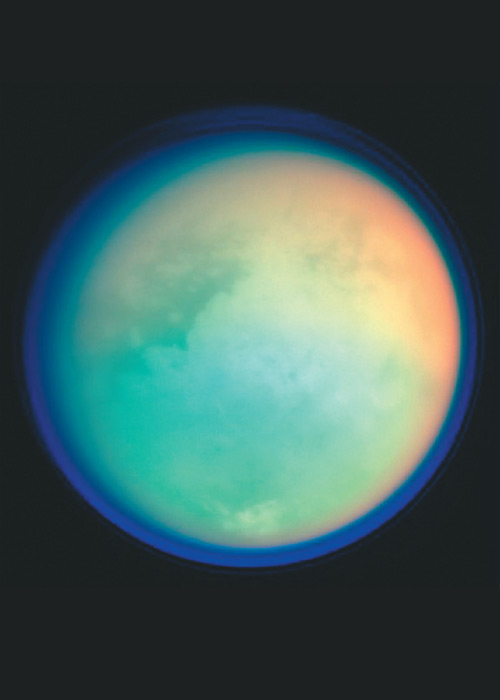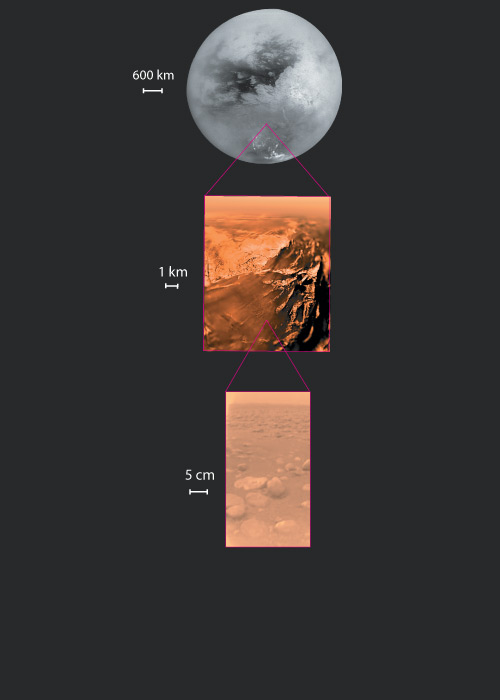Titan: A Moon with an Atmosphere
When we hear the word “moon,” most of us probably think of the barren, cratered, and airless surface that we see in pictures of our own Moon. But not all moons are like that. For example, Jupiter’s moon Io is covered with active volcanoes, and some moons seem likely to harbor subsurface oceans. There’s even one moon in our solar system that has a substantial atmosphere: Saturn’s moon Titan.
The atmospheric pressure on Titan is greater (by about 50%) than that on Earth. That’s enough pressure to make it possible for Titan to have liquid lakes and seas, except that Titan’s great distance from the Sun (remember, it orbits Saturn) makes it far too cold for liquid water. Instead, Titan has lakes and seas of liquid methane and ethane – substances that are gases at the temperature of Earth, but condense into liquid form at the cold temperatures of Titan.
One spacecraft has already landed on Titan (see Slide 2 below), and NASA is currently working on another mission, called Dragonfly, that may launch as early as 2026 (for arrival at Titan in 2034). Dragonfly will essentially be a drone that will be able to fly around in Titan’s atmosphere, thereby exploring a larger region of the moon.
This animation introduces the Dragonfly mission to Titan, which NASA hopes to launch in 2026 for a 2034 landing on Titan.
In case you are wondering, the reason that Titan is able to hold on to an atmosphere comes from a combination of its large size for a moon (it is larger in diameter than the planet Mercury) and large distance from the Sun. The large distance makes it very cold, which means gas molecules move more slowly (recall our discussion about temperature in Section 4.2.3.) and are therefore less likely to escape into space.
It’s also worth noting that while Titan is the only moon in our solar system with a significant atmosphere, it seems likely that we’ll find many other moons with atmospheres as we learn more about other solar systems. In fact, it’s possible that some of these moons might even be located at distances from their stars at which they might have oceans of liquid water, and perhaps even life.


